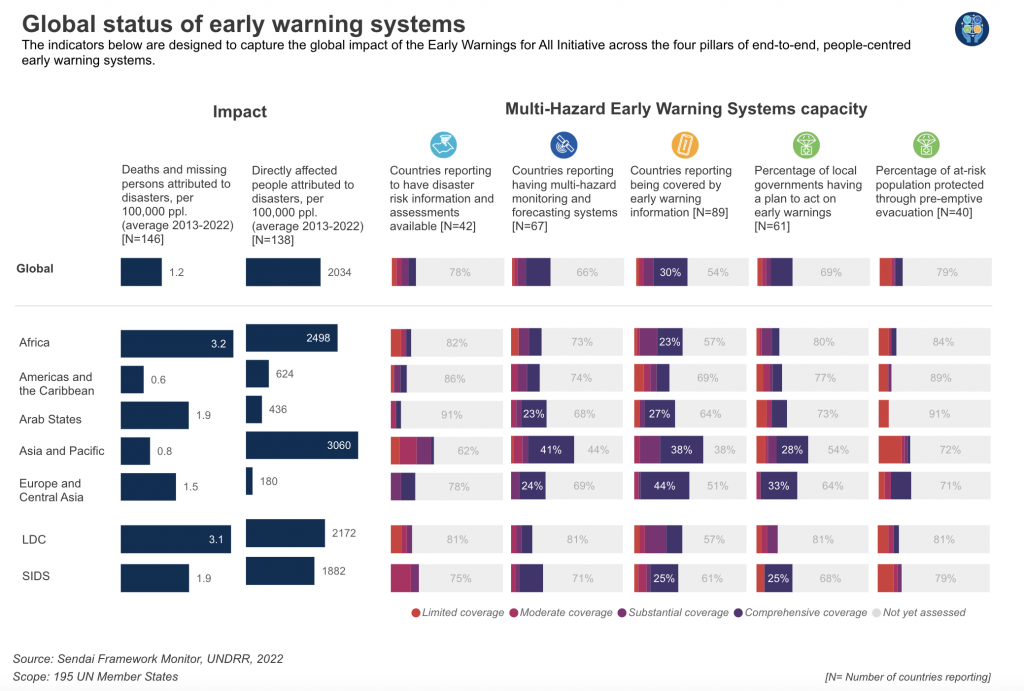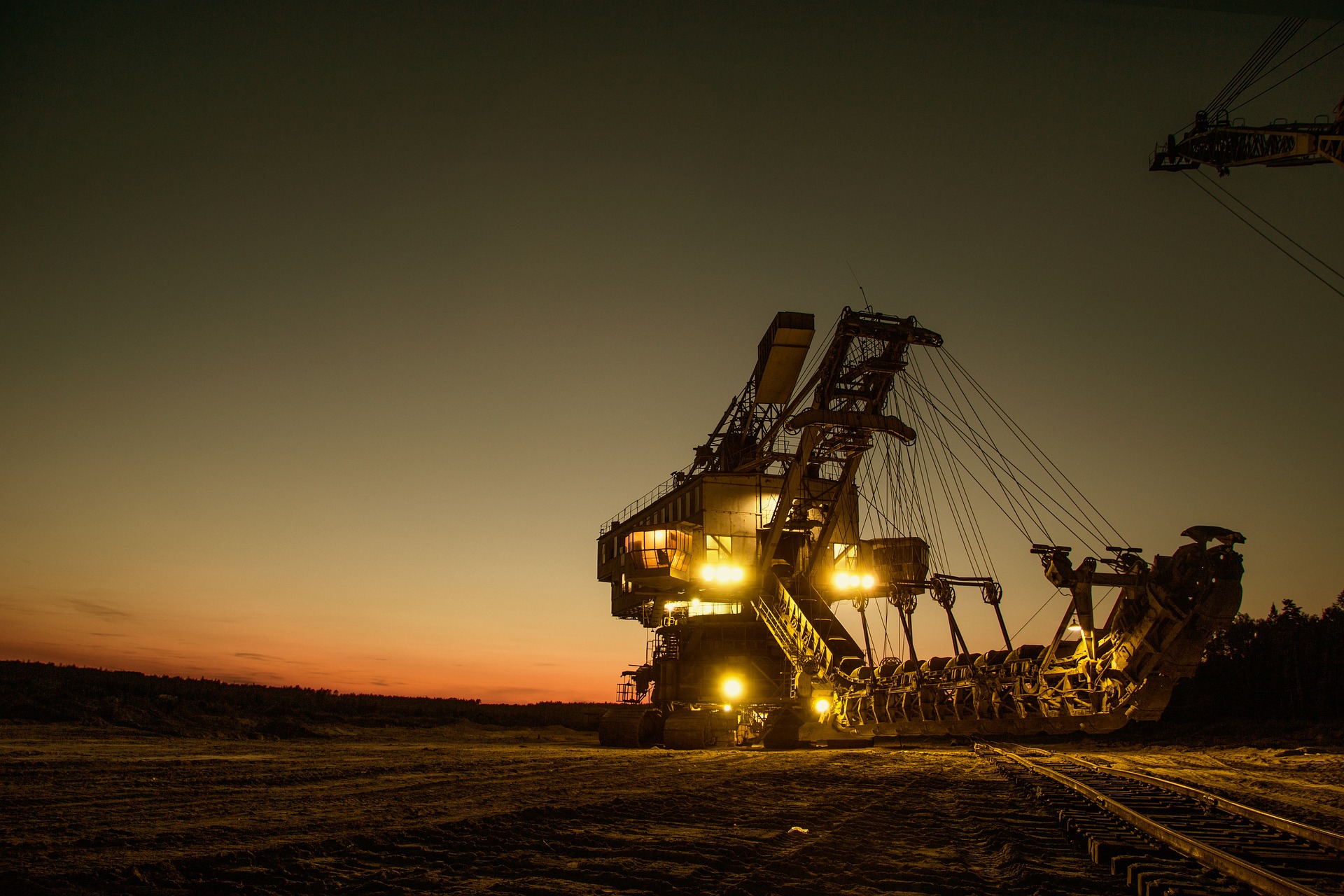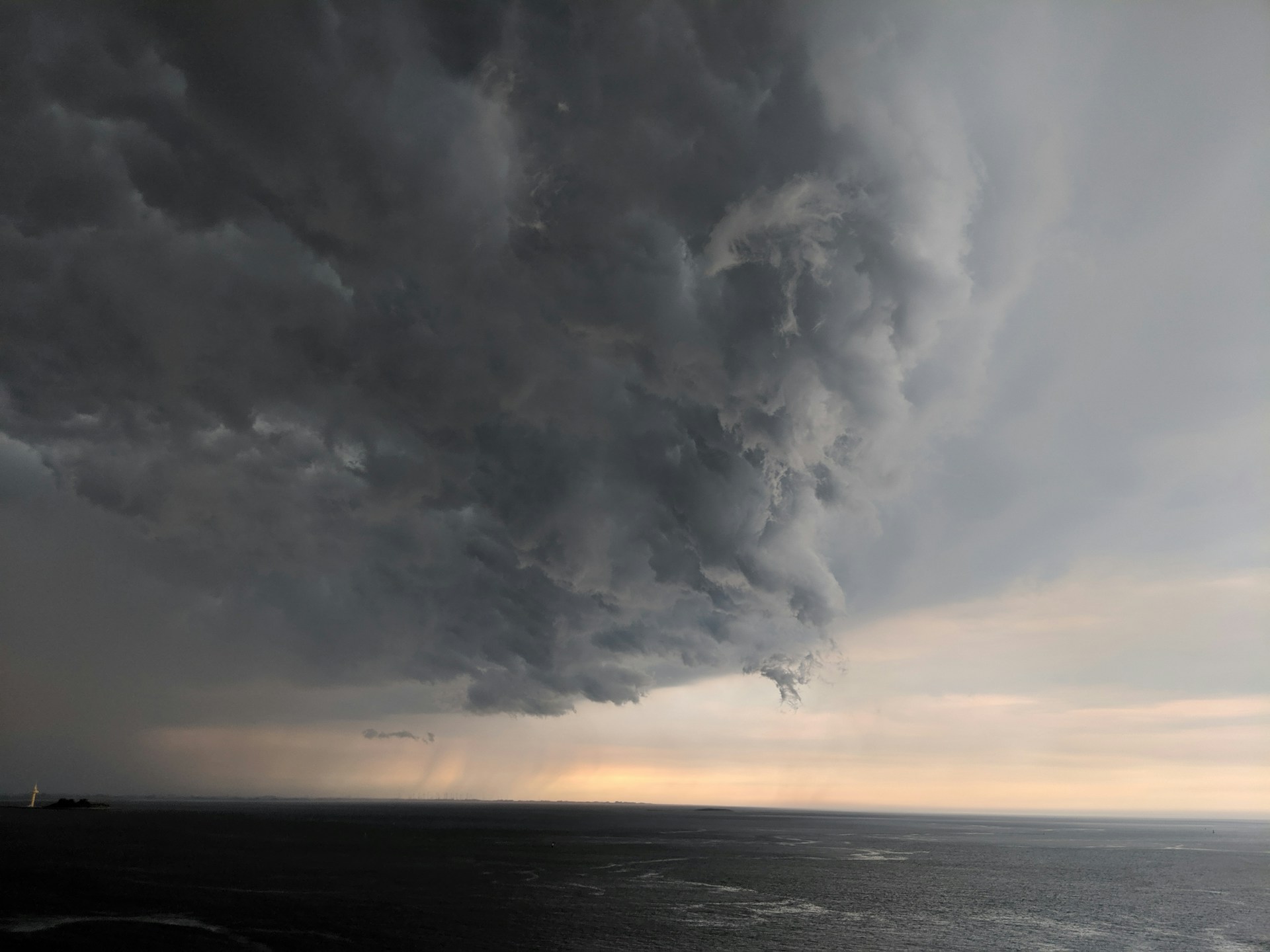At the recent COP28 meetings in Dubai important steps were taken towards bringing the issue of adaptation to the fore, moving on from the almost singular focus on mitigation which has tended to characterize the UN climate process. The Global Goal on Adaptation (GGA) has long been a key concern for climate-vulnerable nations and in Dubai parties came together to finally agree on a “framework” that would guide adaptation efforts.
Gaining momentum for adaptation has been a crutch in the UN climate process for a long time, not least of which because – in contrast to emissions reductions projects – adaptation focused measures tend not to generate revenue and hence fail to attract private investment. Although COP28 failed to provide a specific agenda to bring forward GGA, one area in which progress was made was developing a key tool in adaptation efforts: early warning systems.
The 2023 Global Status of Multi-Hazard Early Warning Systems report launched at COP28 brings together and assesses the latest data emerging from the Early Warnings for All Initiative whose objective is to create global coverage by 2027, including the development of an interactive Early Warnings for All Dashboard which is already available online.

A key player in reaching the UN goal to have early warning systems for everyone on the planet by 2027 is the Adaptation Fund.
Mikko Ollikainen, who heads up the fund, recently commented, “many of our projects are helping to reduce and avert further loss and damage,” adding that “the fund is committed to supporting developing countries to build resilience to climate disasters. With the global urgency for adaptation expressed in recent international reports, such as the UNEP Adaptation Gap Report, we must accelerate and scale up our collective adaptation activities, including Disaster Risk Reduction (DRR)/Early Warning System (EWS). We have seen several instances where Adaptation Fund projects were successfully scaled up to create transformational DRR/EWS systems in countries.”
Through its financing of projects and programmes aimed at vulnerable communities in developing countries the Adaptation Fund works towards ensuring that climate change adaptation is based on the specific needs and prioritise of countries, including when it comes to developing adequate early warning systems.
What are early warning systems?
According to the UN definition “Early warning system is an adaptive measure for climate change, using integrated communication systems to help communities prepare for hazardous climate-related events. A successful EWS saves lives and jobs, land and infrastructures and supports long-term sustainability. Early warning systems will assist public officials and administrators in their planning, saving money in the long run and protecting economies.”
UNDP’s Signature Programme, “Strengthening Climate Information and Early Warning Systems for Climate Resilient Development and adaptation to climate change” seeks to develop systems which can ensure preparedness and rapid response to natural disasters, using a model that integrates the components of risk knowledge, monitoring and predicting, dissemination of information and response to warnings.
One-fifth of all people aren’t covered by early warning systems. Countries need the right tools, planning and infrastructure to adapt to the changing climate and save lives. https://t.co/Ol984jdqM6 #LivablePlanet pic.twitter.com/TkPutNQAr1
— World Bank Climate (@WBG_Climate) January 12, 2024
A recent Adaptation Fund study highlights how disaster risk reduction and early warning systems can play a pivotal role in addressing the growing challenges associated with climate change. Particularly when it comes to early warning systems the study reveals the importance of improved data quality in decision-making, the impact of understanding and communicating risks on outcomes, and the significance of well-suited hydro-meteorological and community institutions for positive outcomes.
For example, the “Enhancing Adaptive Capacity of Andean Communities through Climate Services (ENANDES)” regional project in Chile, Columbia and Peru tailored information to indigenous groups and different government sectors to help communities make informed decisions by having access to appropriate information. Applying this approach to communities around the world is the hallmark of effective early warning systems.
Developing early warning systems
For early warning systems to be effective sound scientific and technical structures that focus on people or sectors that are most vulnerable to risks need to be put in place. This includes detection, analysis, prediction, and then warning dissemination followed by response decision-making and implementation; a “systems approach” where all relevant risk factors are taken into consideration.
MedEWSa had a great kick off meeting in Athens on 9-10 November, at which over 50 partner representatives came together to plan, discuss, and structure the three years of work ahead. Huge thanks to our hosts, attendees, and local partners! pic.twitter.com/wfCA2oX1TT
— MedEWSa (@medewsa_project) November 21, 2023
According to Climate Adapt: “To be effective and complete, an early warning system needs to comprise four interacting elements namely: (i) risk knowledge, (ii) monitoring and warning services, (iii) dissemination and communication and (iv) response capability.”
Although this approach in Europe is already well developed, particularly when it comes to flood and flash-flood risk, storms, forest fires, heatwaves and droughts, programmes such as the UN’s Early Warnings for All are key to ensuring that less developed countries, which are often also the most vulnerable, are also protected from extreme events.
This means developing disaster risk knowledge, detection, observation, monitoring, analysis, and forecasting, warning dissemination and communication and preparedness and response capabilities.
A new project developed under the EU Horizon umbrella with the collaboration of the CMCC is looking to develop interoperable Multi-Hazard impact-based Early Warning Systems to span the pan-European-Mediterranean-African area. MedEWSA (Mediterranean and pan-European forecast and Early Warning Systems for natural hazards) addresses these challenges by providing novel solutions to ensure timely, precise, and actionable impact and finance forecasting, and early warning systems that support the rapid deployment of first responders to vulnerable areas.
Through eight carefully selected pilot sites (areas in Europe, the southern Mediterranean, and Africa with a history of being impacted by natural hazards and extreme events with cascading effects), four digital twins will be created.
The twins will bridge areas with different climatic/physiographic conditions, yet subject to similar hazards, and are well positioned to deliver long-term bi- directional knowledge transfer, demonstrating the transferability and versatility of the tools developed in MedEWSa.






